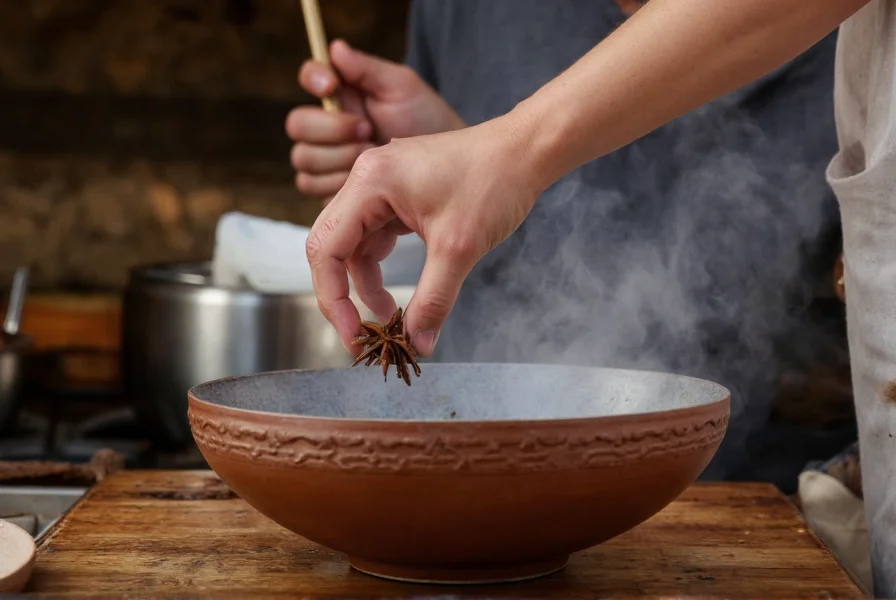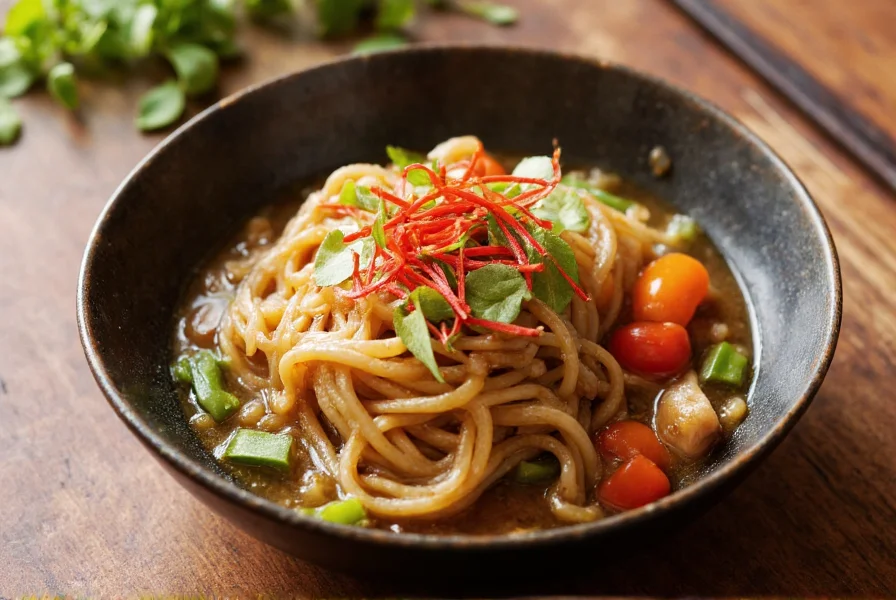Understanding the role of anise in pho requires appreciating its place within Vietnam's culinary tradition. Star anise (Illicium verum)—not to be confused with regular anise seed—provides the characteristic aromatic foundation that distinguishes authentic pho from other noodle soups. This eight-pointed star-shaped spice contains anethole, the same compound found in fennel and licorice, but when used judiciously in pho, it creates a complex warmth rather than a dominant licorice flavor.
The Essential Role of Star Anise in Pho Broth
Traditional pho broth relies on a carefully balanced pho sach (spice bundle) where star anise plays a starring role alongside cinnamon, cloves, and cardamom. Unlike regular anise seed which comes from a different plant family, star anise delivers a more complex flavor profile with hints of citrus and pine that complement beef or chicken bones beautifully.
Professional pho chefs emphasize proper preparation technique: whole star anise pods should be lightly toasted in a dry pan until fragrant before adding to the broth. This crucial step activates the essential oils without burning the delicate compounds. Overuse creates bitterness, while too little fails to achieve the signature aromatic depth that defines quality pho.
| Spice | Traditional Quantity (per gallon) | h>Flavor Contribution|
|---|---|---|
| Star Anise | 2-3 whole pods | Warm sweetness, subtle licorice notes |
| Cinnamon Stick | 2-inch piece | Woody warmth, subtle sweetness |
| Coriander Seeds | 1 tablespoon | Citrusy, floral notes |
| Cloves | 3-4 whole | Pungent warmth, slight bitterness |
Regional Variations: North vs. South Vietnam
The use of anise reveals fascinating regional differences in Vietnamese cuisine. Traditional Northern Vietnamese pho (pho bac) features a more pronounced spice profile with generous star anise usage, creating a darker, more complex broth. This style reflects Chinese culinary influences and the cooler northern climate where heartier flavors are preferred.
Conversely, Southern Vietnamese pho (pho nam) presents a lighter, clearer broth with more restrained spice usage. Southern versions often reduce star anise quantity significantly, sometimes omitting it entirely in favor of brighter garnishes like bean sprouts and herbs. This regional distinction explains why some pho experiences emphasize the warm anise notes while others showcase pure meat essence.
Debunking Common Anise Misconceptions
Many Westerners express concern about the "licorice flavor" in pho, often misunderstanding star anise's role. When properly used in authentic proportions, star anise contributes subtle warmth rather than dominant licorice notes. The confusion stems from:
- Mistaking star anise for regular anise seed (different plants with distinct flavor profiles)
- Encountering poorly balanced Westernized versions that overuse spices
- Confusing pho with other Asian soups that feature stronger anise flavors
Authentic pho achieves harmony where no single spice dominates. The star anise works synergistically with charred ginger and onion to create a broth that's aromatic without being overpowering—a delicate balance perfected over generations.
Practical Guidance for Home Preparation
For those crafting pho at home, proper anise handling makes all the difference. Begin by selecting plump, reddish-brown star anise pods—avoid pale or broken specimens. Toast them gently in a dry skillet over medium heat for 1-2 minutes until fragrant, taking care not to burn. Add to your broth during the final 30-45 minutes of simmering to prevent bitterness.
When experimenting with traditional northern vietnamese pho with star anise, remember that less is more. Two whole pods per gallon provides authentic flavor without overwhelming other elements. For those sensitive to the compound that creates licorice notes, reduce to 1-1.5 pods while increasing complementary spices like cinnamon.

Why Anise Matters in Pho's Cultural Identity
Star anise represents more than just flavor—it's a cultural marker connecting pho to Vietnam's trading history. Introduced through Chinese spice routes, this spice became integral to Northern Vietnamese cuisine during the French colonial period when butchers began selling bone broth as affordable nourishment. The distinctive aroma of star anise helped distinguish pho from other regional noodle soups, eventually becoming its signature element.
Today, the proper way to use star anise in pho remains a point of pride among traditional chefs. The spice's warm notes cut through rich meat fats while enhancing umami, creating the complex depth that has made pho a global phenomenon. Understanding this delicate balance separates authentic preparation from mere approximation.

Final Considerations for Pho Enthusiasts
When evaluating pho quality, the anise presence should be detectable but not dominant—a supporting player rather than the star. Authentic preparation respects the difference between northern and southern pho spices, allowing regional variations to shine. Whether enjoying pho at a Hanoi street stall or crafting it at home, appreciating star anise's nuanced contribution deepens one's understanding of this beloved dish.
Does traditional pho contain star anise?
Yes, authentic Northern Vietnamese pho traditionally includes star anise as a key component of the spice bundle. Southern Vietnamese versions use it more sparingly or sometimes omit it entirely, reflecting regional taste preferences.
How much star anise should I use for pho broth?
For authentic flavor balance, use 2-3 whole star anise pods per gallon of broth. Professional chefs recommend toasting the pods first and adding them during the final 30-45 minutes of simmering to prevent bitterness while maximizing flavor extraction.
Why does my pho taste like licorice?
Excessive star anise or improper preparation causes strong licorice notes. Authentic pho should have subtle warmth from star anise, not dominant licorice flavor. Reduce star anise quantity, ensure proper toasting, and limit simmering time to 45 minutes maximum for balanced results.
Can I substitute regular anise for star anise in pho?
While possible in a pinch, regular anise seed differs significantly from star anise. Star anise provides more complex notes with citrus and pine undertones, while regular anise delivers stronger licorice flavor. For authentic results, use star anise as it's fundamental to traditional pho's distinctive profile.
What's the difference between Northern and Southern pho spice profiles?
Northern Vietnamese pho features more pronounced spices including generous star anise usage, creating a darker, more complex broth. Southern versions use lighter spice profiles with reduced star anise, emphasizing fresh garnishes instead. This regional distinction reflects historical culinary influences and climate differences across Vietnam.











 浙公网安备
33010002000092号
浙公网安备
33010002000092号 浙B2-20120091-4
浙B2-20120091-4